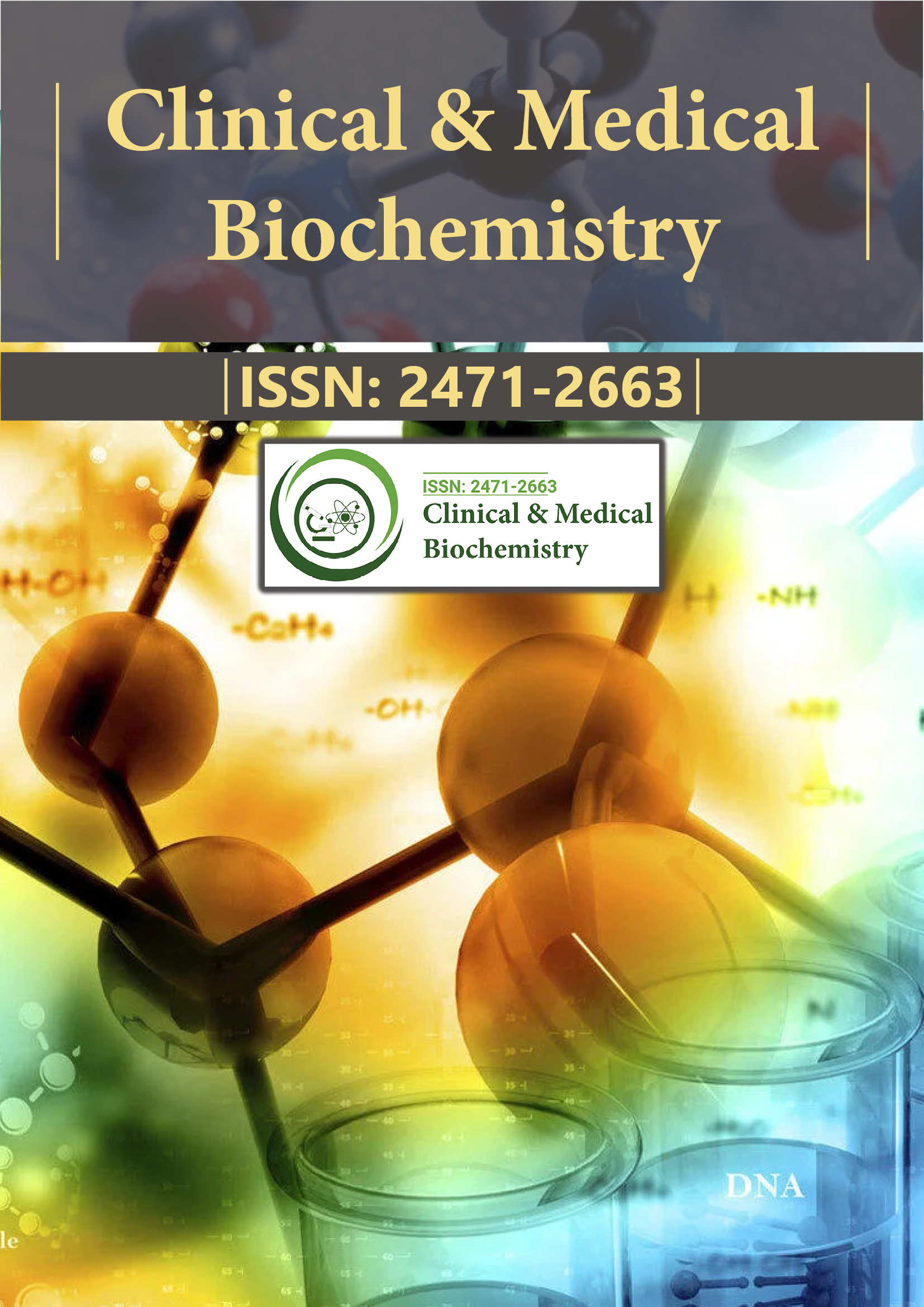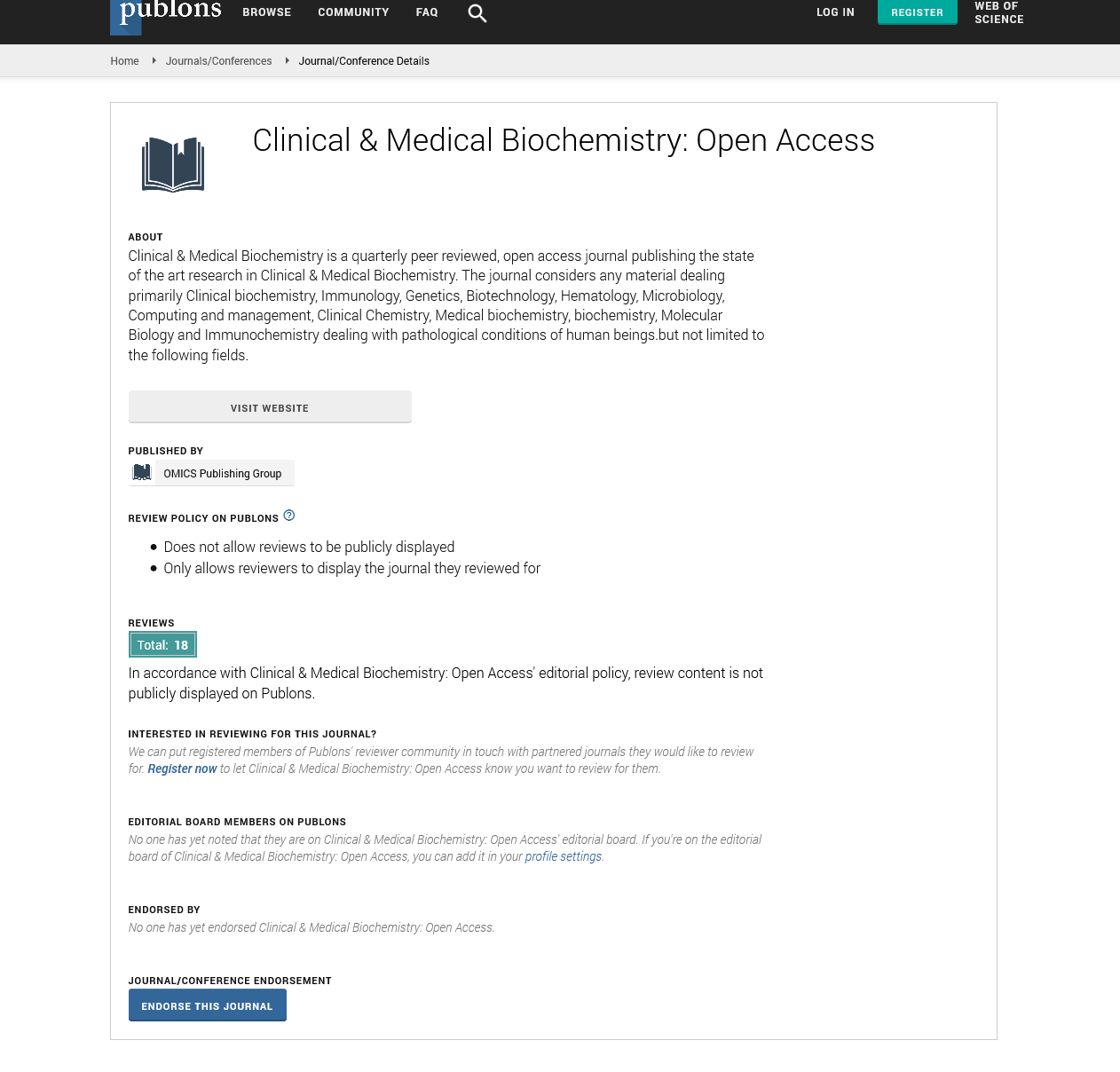Indexed In
- RefSeek
- Directory of Research Journal Indexing (DRJI)
- Hamdard University
- EBSCO A-Z
- OCLC- WorldCat
- Scholarsteer
- Publons
- Euro Pub
- Google Scholar
Useful Links
Share This Page
Journal Flyer

Open Access Journals
- Agri and Aquaculture
- Biochemistry
- Bioinformatics & Systems Biology
- Business & Management
- Chemistry
- Clinical Sciences
- Engineering
- Food & Nutrition
- General Science
- Genetics & Molecular Biology
- Immunology & Microbiology
- Medical Sciences
- Neuroscience & Psychology
- Nursing & Health Care
- Pharmaceutical Sciences
Market Analysis - (2021) Volume 7, Issue 1
Global presence of your research at 13th International Conference on Applied Microbiology
Dr. Ali O Kilic*Published: 28-Jan-2021
Market Analysis
The Applied microbiology market is growing due to increase in prevalence of pathogenic diseases, growth in discovery of mutating and adapting bacterium, and the growing need for speedy microbiological testing methods. In 2013, the microbiology testing market accounted for 5% in the global IVD market and contributed $3556.7 million in 2013 to the IVD market, and is estimated to reach $4737.2 million by 2018, at a CAGR of 6.2% from 2013 to 2019.
There has been an increase in the number of infectious diseases across the globe. The factors such as the rise in incidence of HIV and tuberculosis as well as sexually transmitted diseases in developing countries along with the rise in respiratory diseases like influenza in developed countries like Europe and America will drive the microbiology market.
Technological advances, like automated instruments for identification of pathogens in laboratories, have been of immense help to microbiologists. Automation has helped to enhance key laboratory performance attributes like consistency, quality, and a slower total turnaround time. Thus, automation is the new trend in the microbiology field. However, it will take time to pick-up as it requires extensive training of laboratory personnel. These machines are helping medical practitioners receive accurate data and determine the precise course of treatment without spending too much time.
Similarly, factors like the consolidation of diagnostic laboratory chains and the increase in public awareness are driving the growth of the market. The emerging countries are expected to outperform the U.S. and European countries. This is mainly due to the increase in the major hospital chains opening new centers in major cities as well as an increase in the government.
Expenditure
The global applied microbiology market was valued at $3.63 billion in the year 2018 and is forecasted to grow at a CAGR of 6.4% to reach $5.23 billion in 2024. The market for microbiology testing is evaluated in instruments and reagents. In 2018, the instruments product section accounted for the biggest share of the market; but, the reagents product section is predicted to grow at a better rate throughout the forecast amount. The biology testing market is segmental into hospitals and diagnostic centers, custom laboratory service suppliers and tutorial and analysis institutes. The key factors driving the expansion of this market embody in progress technological advancements within the field of infectious diseases diagnosing, rising incidence of infectious diseases and growth irruption of epidemics and increased funding and public-private investments for research and innovation.

Figure 1. microbiology growth of industries worldwide through 2015-2025)
In 2013, the microbiology testing market accounted for 5% in the global IVD market and contributed $3556.7 million in 2013 to the IVD market, and is estimated to reach $4737.2 million by 2018, at a CAGR of 6.2% from 2013 to 2018.
The Centers for Medicare & Medicaid Services (CMS) has estimated that healthcare spending in the U.S. is expected to grow from $2.7 trillion in 2011 to about $4.6 trillion in 2018, at a CAGR of 6.8% for the same period. Similarly, in emerging countries, awareness and an increasing middle-class population, with a more disposable income to spend on healthcare, will be a driving force for the growth of this market.
The report ‘Global Microbiology Market forecast for 2018’ analyzes the market by segments such as instruments and reagents. These two segments experienced a positive growth till 2013, with a market value of $3.55 billion, comprising of $2.99 billion for reagents and $10.55 billion for instruments. It is expected to grow at a CAGR of 6.2%.
The Americas commanded the largest share of 42% in the global microbiology market at $1485.02 million in 2013, and is expected to reach $1932.8 million by 2018, at a CAGR of 5.6% from 2013 to 2018.
The U.S. commanded the largest share of 89% in the American microbiology IVD market at $1320.4 million in 2012, and is expected to reach $1715.6 million by 2017, at a CAGR of 5.6% from 2013 to 2018.
Europe holds the second-largest market position. Germany commanded the largest share of 20% at $223.7 million in 2013, and is expected to reach $272.5 million by 2018, at a CAGR of 4.2% from 2013 to 2018.
China commanded the largest share of 53% at $177.1 million in 2013 in the Asian microbiology market, and is expected to reach $334.5 million by 2018, at a CAGR of 14.2% from 2013 to 2018.
Major Industries of Microbiology
The report contains profiles of a wide range of companies that are active in the applied microbiology market, which includes companies that in the traditional microbiology market, immunoassay market, molecular microbiology market, and also mass spectrometry systems for the microbiology laboratory.

North America
In2016, North America and Europe are expected to be the mature markets for applied microbiology products. Currently, North America dominates the global market, with the market yet to reach saturation. The Canada is the leading market both globally and in North America. Canada’s market is currently estimated to be worth USD 8.71 billion in the year 2014 and is expected to reach USD 11.31billion by the end of 2020.
Europe
Europe holds the second-largest market position. Germany commanded the largest share of 20% at $223.7 million in 2013, and is expected to reach $272.5 million by2018, at a CAGR of 4.2% from 2013 to 2018.
Asia-Pacific
However, the Asia-Pacific market is projected to grow at the highest CAGR during the forecast period owing to the growing number of hospitals and clinical diagnostic laboratories. The Microbiology Testing / Clinical Microbiology Market by Product, Clinical Application and by Industry – Global Forecast to 2019 research report estimates this industry to reach $12,411.36 Million in 2019 at a CAGR of 13.03% between 2014 and2019.
Middle-East
However, the Asia-Pacific market is projected to grow at the highest CAGR during the forecast period owing to the growing number of hospitals and clinical diagnostic laboratories. The total market for Microbiology testing was US$ 2706.1 million in 2016 and expected to reach US$5409.1 million by 2023

Global Market Research Report
The global market of Bio-refinery technologies will grow from $466.6 billion in 2016 to $814.6 billion by 2021, with a compound annual growth rate (CAGR) of 8.9% for the period of 2016-2021.
The global market for microbiology technology, equipment, and consumables market reached $9.8 billion in revenue in 2015. The market should reach nearly $12.3 billion by 2020, increasing at a compound annual growth rate (CAGR) of 4.6% from 2015 to 2020.
The most important global single-cell proteomics market is expected to grow from $555.3 million in 2018 to nearly $1.6 billion in 2022, at a compound annual growth rate (CAGR) of 23.5% from 2018 to 2022.
The business market for fertility clinics in the US should reach a value of $3.6 billion in 2018 and is expected to grow to $4.5 billion by 2022 at a compound annual growth rate (CAGR) of 4.6% for the period of 2018-2022.
Major Industries of Microbiology
The report contains profiles of a wide range of companies that are active in the clinical microbiology market, which includes companies that in the traditional microbiology market, immunoassay market, molecular microbiology market, and also mass spect Paristry systems for the microbiology laboratory.
The propelling factors for the growth of the microbiology testing market include technological advancements in microbiology testing, rising incidences of infectious diseases and outbreak of epidemics, growing healthcare expenditure, and rising private-public funding for research on infectious diseases.
Infectious diseases, such as HIV, human papilloma virus (HPV), and hepatitis B and C, are some forms of STDs that are severe and fatal, and thus the increasing incidences of such diseases are increasing the demand for the microbiology testing market. Increasing healthcare expenditure and the presence of better medical infrastructures, such as hospitals and clinical labs, are some other drivers augmenting the growth of the microbiology testing market.
Rapid growth observed in the geriatric population, increasing number of Applied researches in the field of Applied microbiology, rising incidences of infectious diseases, and increased funding, research grants, and public-private investments are some of the factors that are driving the microbiology testing market.
Rapid technological advancements are also being witnessed across the worlds that are anticipated to drive the microbiology testing market in the upcoming years. There are emerging economies, such as India and China, which may offer new growth opportunities for the microbiology testing market
Applied Microbiology Industrial
Industrial Microbiological science is that the application of biological science technique for management and exploitation of microorganisms for production and process of helpful merchandise on a billboard scale. Industrial microbiology has wide applications in the manufacturing of pharmaceuticals, food and beverages, agriculture products, industrial chemicals, environment and other. The global industrial microbiology market is estimated to be valued at $ 8,878.2 million by 2016 and projected to grow at CAGR of 7.1% to reach $16,455.0 by 2026 end.
Related Microbiology Associations and Societies
1. Federation of American Societies for experimental biology
2. Society for Industrial Microbiology and biotechnology
3. Society for Applied Microbiology
4. International Union of microbiological societies,
5. Southern California Branch of the American Society for Microbiology,
6. Society for the Advancement of Biology Education Research,
7. Federation of Asia-Pacific Microbiology Societies
8. Asia Pacific Society of Clinical Microbiology and Infection
9. Federation of European Microbiological Societies
10. Malaysian Society of Infectious Diseases,
11. Southeastern Association for clinical microbiology,
12. Association of medical school microbiology and immunology chairs
13. Association for Clinical Microbiology and Antimicrobial Chemotherapy
14. The American Association of Immunologists
15. Association of medical school microbiology and immunology chairs
16. British Association of Dermatologists
17. European Biosafety Association18. Scottish Microbiology Association
19. Association of Medical Microbiology and Infectious Disease Canada
20. The Association for Clinical Biochemistry and Laboratory Medicine.
Related Microbiology Universities and Hospitals
1. Harvard University
2. Massachusetts Institute of Technology
3. University of Melbourne
4. University of California--San Francisco
5. University of Oxford
6. University of Washington
7. Stanford University
8. Duke University
9. University of Cambridge
10. Rockefeller University
11. Johns Hopkins University
12. Lausanne University Hospital, Switzerland
13. University of Tokyo Hospital, Japan
14. Massachusetts general Hospital, Boston, Massachusetts, New Eastern England, US
15. Charité - Berlin University of Medicine, Berlin, Germany
16. Johns Hopkins Hospital, Baltimore, Maryland, US
17. Singapore General Hospital, Singapore
18. Cleveland Clinic, USA
19. Mayo Clinic
20. El Camino Hospital – Mountain View, California

